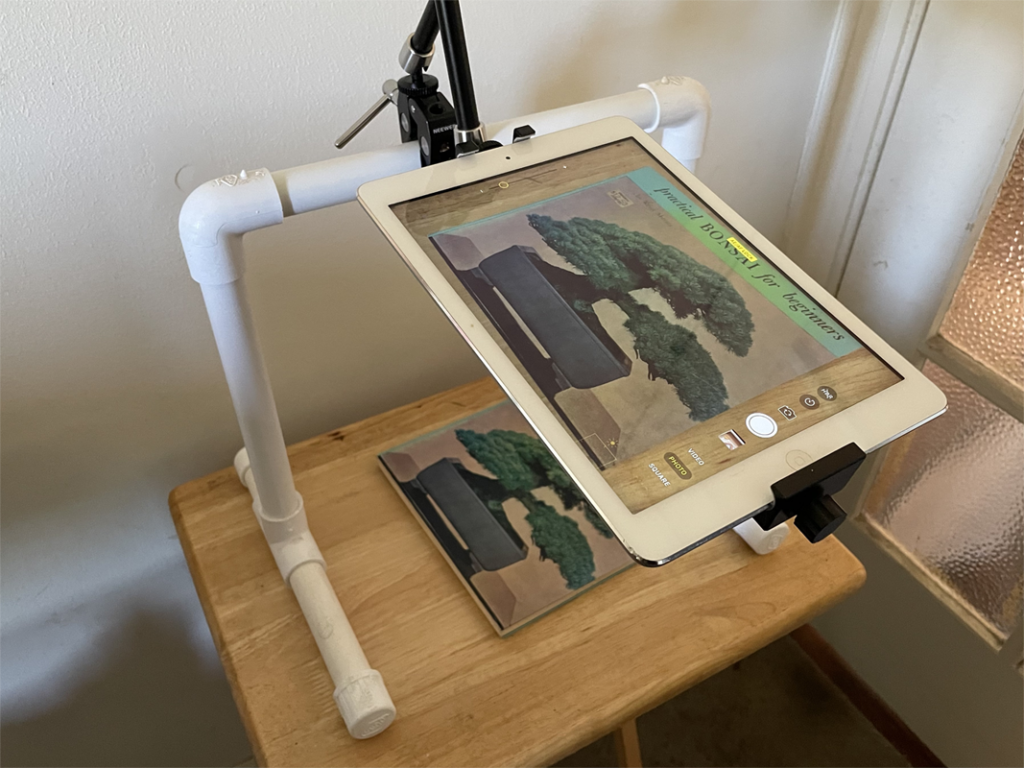
Contents
Summary
My daughter, a teacher, knows that I have strong maker/DIYer tendencies and that I like to be challenged. For the upcoming school year, her school is providing the teachers with new big screen TVs and iPad tablets. Previously, she used a mobile phone connected to a scissor-bracket, connected to a desk clamp for a document camera. Her complaint about that setup was that it was pretty wiggly. Now that she has shiny new hardware, she wanted an upgrade to her document camera setup, and she wanted to use the iPad’s screen mirroring capabilities.
Design
My approach was to design something budget-friendly and easy to build. PVC pipe and fittings are budget friendly, and the build only required one tool, besides a tape measure: a low-cost ratcheting PVC cutter. I saw other designs that required saws and drills. This design avoids using a saw or drill by utilizing off-the-shelf mounting hardware.
The lengths of the PVC pipe sections were based on fitting a normal, letter-sized sheet of paper under the camera. The height of the 9-inch vertical posts create a working distance that fits the whole sheet of paper within view of an iPad camera.
Materials
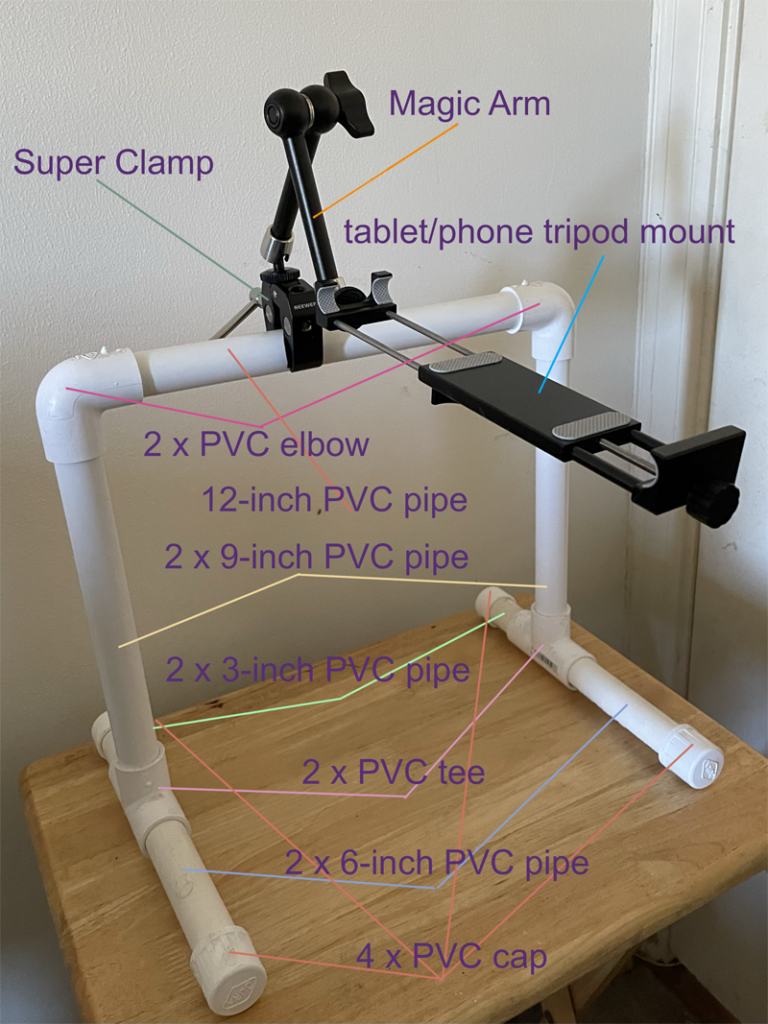
My design is composed of: low-cost 3/4-inch PVC pipe and fittings, a tablet/phone tripod mount, an 11-inch Magic Arm — a 2-section articulating bracket a short Magic Arm, and a Super Clamp — a clamp suited well for mounting photographic equipment to cylindrical objects, such as poles, stands handlebars, and pipes. What’s magic about the Magic Arm is that 1 knob loosens and tightens all joints. Manfrotto is the company behind the original, high-quality, pricey versions of the Magic Arm and Super Clamp. I am using knock-offs, but the specifications say that they will support a payload of 2kg 3.5kg, which exceeds the weight of an iPad and the tripod mount. I chose the particular tripod mount because it’s all metal and accommodates both tablets and phones.
Bill of materials
- 3/4-inch (inner diameter) PVC pipe: 2 x 3-inches (back of base), 2 x 6-inches (front of base), 2 x 9-inches (vertical posts), 1 x 12-inches (cross bar): https://www.homedepot.com/p/VPC-3-4-in-x-24-in-PVC-Sch-40-Pipe-22075/202300505
- 4 end caps https://www.homedepot.com/p/Charlotte-Pipe-3-4-in-PVC-Schedule-40-Socket-Cap-PVC021160800HD/203811671
- 2 x PVC tees: https://www.homedepot.com/p/Charlotte-Pipe-3-4-in-Schedule-40-S-x-S-x-S-Tee-PVC024000800HD/203812197
- 2 X 90 degree elbows https://www.homedepot.com/p/Charlotte-Pipe-3-4-in-PVC-Schedule-40-90-S-x-S-Elbow-Fitting-PVC023000800HD/203812123
11-inch Magic Arm and Super Clamp https://www.amazon.com/dp/B09FPWWDWN $17.53 when purchased- SmallRig Super Clamp with Ball head Magic Arm https://www.amazon.com/dp/B0B5LFC6L3 $18.69 when purchased
- tablet/phone tripod mount https://www.amazon.com/dp/B08Z7Z7QZ3 $17.95 when purchased
Build Instructions
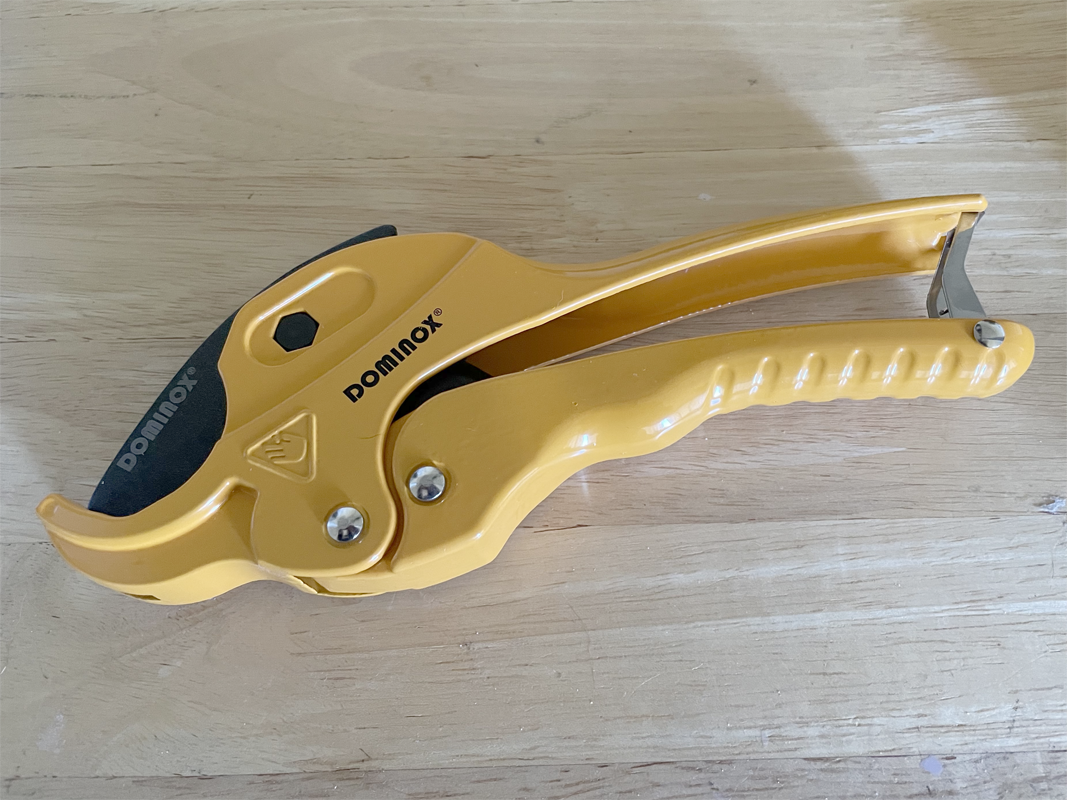
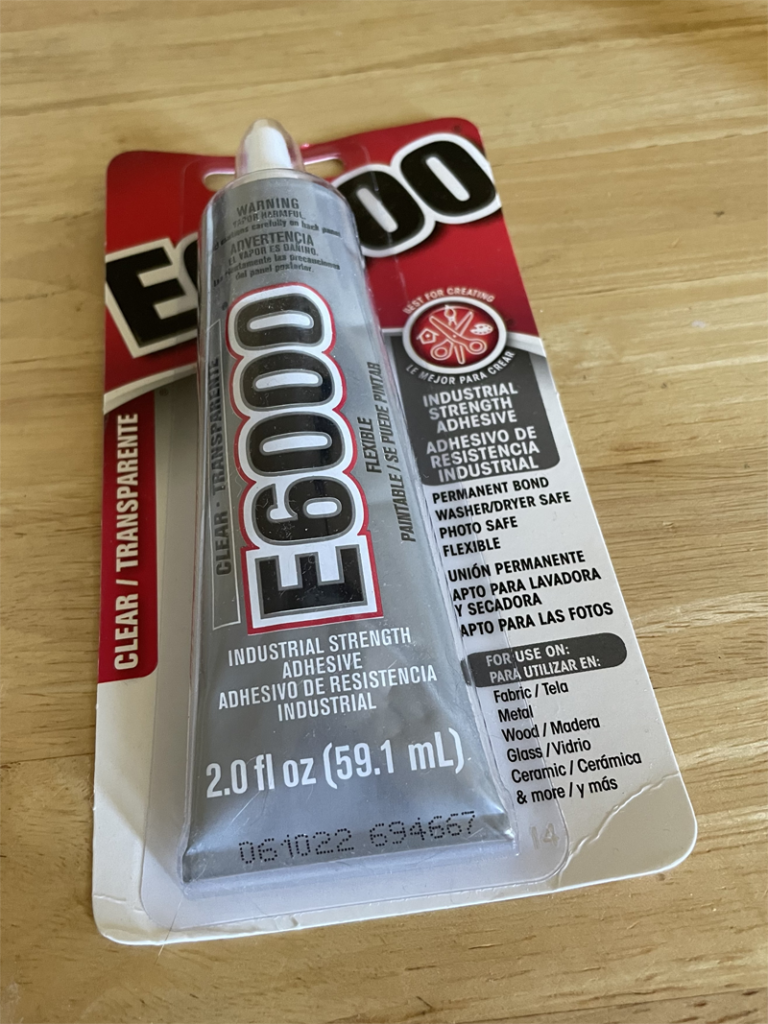

- Cut the necessary pieces of PVC pipe with a ratcheting cutter https://www.amazon.com/dp/B08YDL3NK9
- Assemble the PVC parts as shown in the above photo. Optionally, glue parts together.
- Adjust the tablet/phone tripod mount so it accommodates the target device in portrait orientation. Loosen the mount a little bit so the device can slide out for now.
- Screw one end of the Magic Arm onto the Super Clamp and the other end onto the tripod mount. Before doing this step, you might want to tighten the Magic Arm so that it isn’t so floppy. The clamp needs to be around 8 inches from the right vertical post, not centered when using an iPad, because of its camera location.
- Clamp the Super Clamp onto the 12-inch PVC cross bar with the opening facing down.
- Insert the camera device (tablet or mobile phone). Secure in place by tightening the tripod mount.
- Turn on the camera device and adjust its position by loosening the Magic Arm knob, setting a position, then tightening the Magic Arm knob. To get the device in a position that worked for me, I positioned the pivoting slots of the ball heads to face front, thereby allowing for x-axis tilt.
Use Cases
Portrait Orientation
When using the camera for a document in portrait orientation, I think it’s helpful to lock the tablet or phone in portrait orientation before inserting it into the mount. Place the whole setup so that you are looking at the document in the correct orientation.
Landscape Orientation
When using the camera for a document in portrait orientation, I think it’s helpful to lock the tablet or phone in landscape orientation before inserting it into the mount. Place the whole setup so that you are looking at the document in the correct orientation.
Screen mirroring
On an iOS device, an iPhone or iPad, you need to use AirPlay screen mirroring. Turn screen mirroring on/off by using the Control Center (swipe down from upper right corner of screen), tapping on the Screen Mirroring icon, and selecting the target device. Air Play can also be activated within certain apps such as YouTube by tapping the AirPlay icon.
On an Android device, you need to first grant Microphone permission in Google Play Service app by going to Settings > Apps > Google Play Services > Permissions. To turn on casting, run the Google Home app, and tap the tile of the target cast device. As in iOS, tapping the casting icon within some apps activates casting.
Annotation with an Apple Pencil on an iPad
To use an Apple Pencil for annotation:
- Take a photo of the object of interest
- Tap on the photo thumbnail in the camera app
- Tap on “Edit”
- Tap on the Markup icon
- Select a color and tool
- Start annotating
When not in use
With the selected tripod mount, the screw at the top of the mount allows you to easily loosen the mount enough to slide the tablet out when not in use, which you will probably want to do. Loosening the Magic Arm knob allows the tripod mount to hang vertically instead of protruding horizontally when not it use.
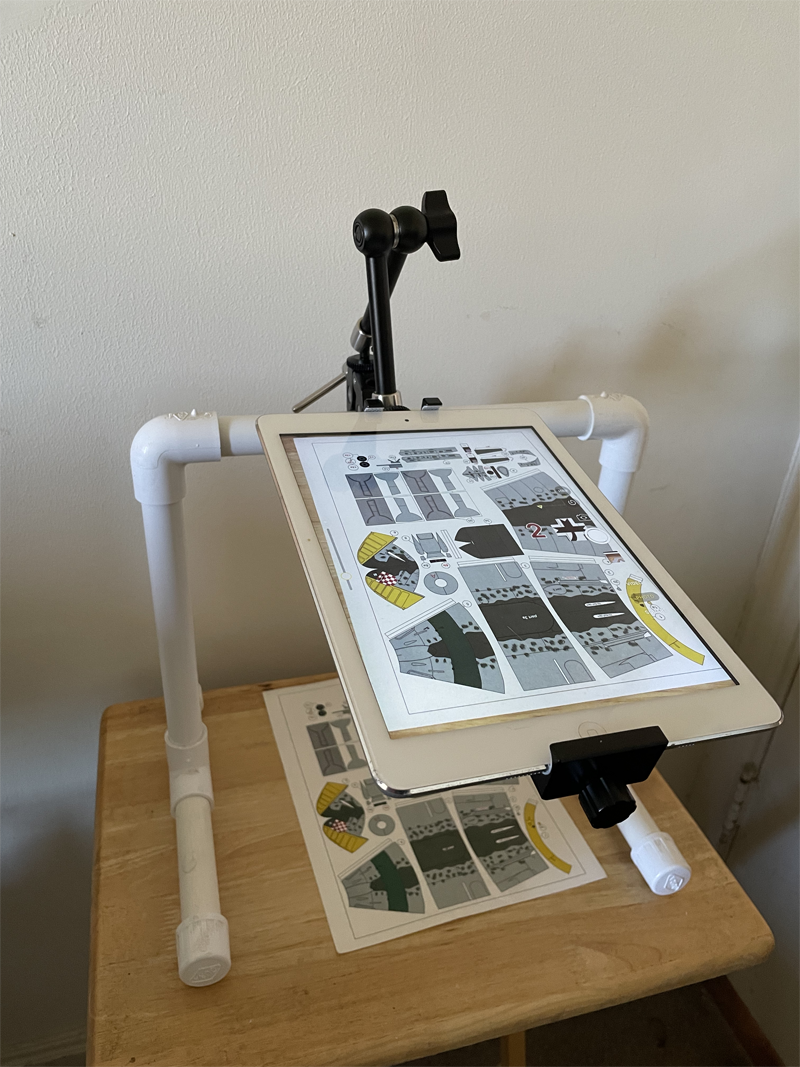
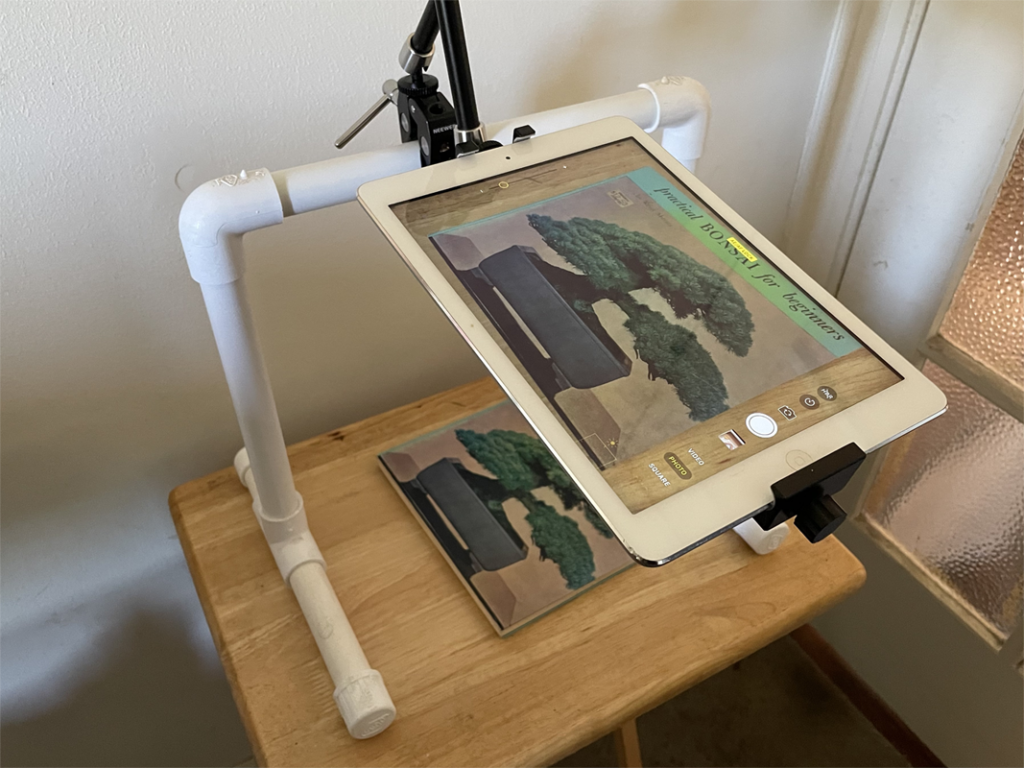
orientation
Alternate Hardware
The 11-inch Magic Arm could be replaced with something not as flexible in regards to adjustment potential. This isn’t a big deal because any possible target device’s camera has zoom capability.
The ball head that came with the tripod mount and an additional purchase of a male-male 1/4″-20 adapter https://www.amazon.com/gp/product/B09NR4W846 could possibly replace the Magic Arm in the design. The height adjustment capability would be eliminated.
A shorter Magic Arm could also be used since probably not so much height adjustment is necessary. Some alternatives:
- Neewer Super Clamp with Double Ball Head Mount https://www.amazon.com/gp/product/B09128Q3YH
- Neewer 5.9″/15cm Magic Arm and Super Clamp Kit https://www.amazon.com/Neewer-Adjustable-Articulating-Mirrorless-Camcorders/dp/B07SV5ZQ4J
Update 8/24/2022

After some experimentation, I decided that the 11-inch Magic Arm was too long. Instead, I chose to use a smaller SuperRig Super Clamp with Ball Head Magic Arm. It doesn’t provide much height adjustment, but camera zoom can compensate for that. Another advantage is its outstanding 3.5 kg (7.7 lb.) load capacity.